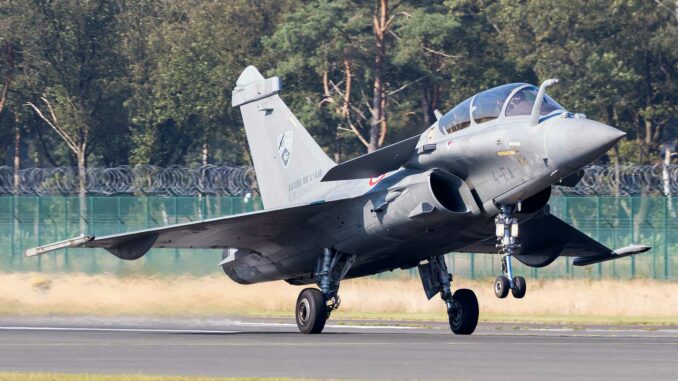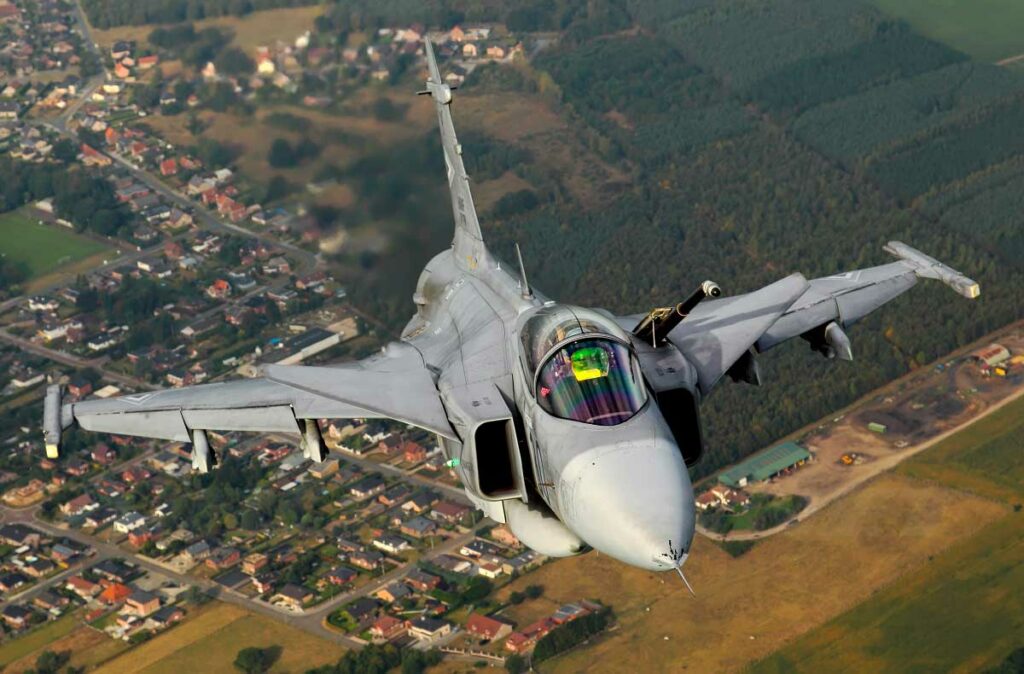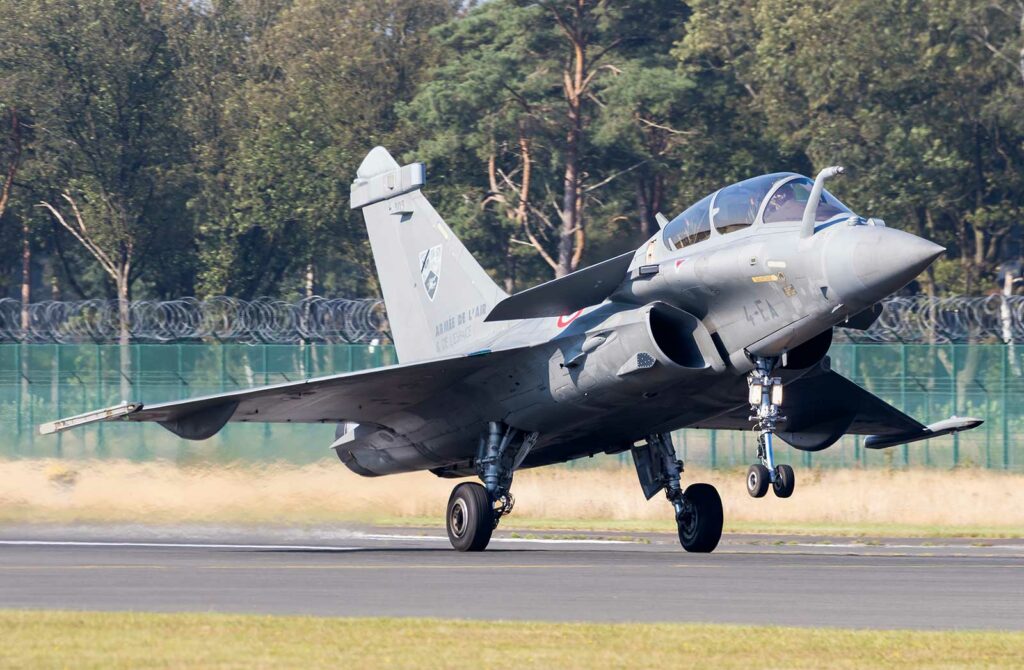
Peru has chosen the Swedish Gripen over the French Rafale. This is a significant commercial setback for Dassault Aviation.
On July 5, 2025, the Peruvian government officially announced the acquisition of 24 Gripen E/F fighter jets from Saab, for an estimated US$3.5 billion (approximately €3.2 billion). The contract is intended to replace the aging fleet of Russian-made MiG-29 and French Mirage 2000 aircraft, which have been in service with the Fuerza Aérea del Perú (FAP) since the 1990s. The final decision ruled out two other finalists: the US F-16 and the Rafale from Dassault Aviation.
This setback comes on top of another recent loss for the Rafale: Colombia, in 2023, also chose the Gripen after years of negotiations with Dassault. These two close failures highlight a weakening of the Rafale’s position in the Latin American market, which is nevertheless seen as an area of potential growth. While the Rafale’s operational capabilities are not in question, political, industrial, and financial considerations seem to have tipped the balance.
The affair also highlights the rise of Swedish manufacturer Saab, whose modular offering, technology transfer options, and aggressive industrial diplomacy are appealing to medium-sized air forces. Dassault Aviation, meanwhile, faces increasingly fierce competition in a context of hostile information campaigns aimed at weakening its image in certain markets. A detailed analysis of the Peruvian decision reveals much more than a simple one-off commercial failure.

A Peruvian preference for an adaptable and industrializable solution
The Gripen appeals with its industrial promises
The contract signed between Peru and Saab includes not only the delivery of 24 Gripen E/F aircraft, but also an ambitious industrial component. According to available information, up to 40% of the contract value would be reinvested in Peruvian industry, notably through local maintenance, assembly, and training centers. This point was decisive for the Peruvian government, which is seeking to develop an autonomous technological base in the field of military aviation.
The Gripen E/F, developed with technological support from Brazil, is a lightweight, modern and flexible multi-role fighter aircraft. It is equipped with AESA Raven ES-05 radar, an advanced electronic warfare system, and can use a wide range of Western weapons. It also has one of the lowest maintenance costs on the market, estimated at $4,000 to $5,000 per flight hour, compared to more than $14,000 for a Rafale, according to sources within the French Air Force.
The Rafale suffers from its contractual rigidity
In response to this integrated offer, Dassault Aviation proposed the Rafale F4 in its most recent configuration. Despite its proven combat capabilities, the Rafale is often perceived as a commercially rigid product. The technology transfer conditions are strict, and local industrial participation is limited, with some exceptions (such as India). In Peru, the lack of a genuine co-production component weighed heavily against the French offer, despite the Mirage 2000’s long history with the Peruvian Air Force.
Dassault traditionally relies on the technical performance of the Rafale fighter jet, its NATO interoperability, and its versatility. But in developing countries, where the purchase of a fighter jet is part of a national industrial project, this positioning is struggling to convince in the face of more flexible competitors.
A second strategic setback in South America
The Colombian failure repeats itself
In 2023, Colombia had already chosen the Gripen over the Rafale after several years of discussions and evaluation missions. At the time, the Colombian government highlighted the overall life-cycle cost, ease of maintenance, and Saab’s commitment to assemble some of the aircraft locally.
The case of Peru follows a similar logic and marks a regional break. South America, historically fragmented between various influences (the United States, France, Russia), now seems to be partially aligning itself with the Swedish-Brazilian strategy. Saab has indeed opened up a regional industrial ecosystem with the establishment of technical centers in Brazil as part of the FX-2 program.
This regional shift puts Dassault on the defensive. Outside Egypt, Qatar, India, and Greece, the Rafale is struggling to expand its commercial base, particularly in markets where the acquisition of a fighter jet is linked to local economic benefits.
Reduced room for negotiation
In Latin America, defense budgets are limited but politically sensitive. The Peruvian contract, estimated at €3.2 billion, includes weapons, spare parts, infrastructure, and training over ten years. The estimated unit price of the Gripen, around $80 to $90 million, remains significantly lower than that of the Rafale F4, whose total cost approaches $130 to $150 million per aircraft once armed and supported over its lifetime.
These differences are amplified by operational costs and the lack of local political leverage for Dassault. France has not proposed any innovative financing mechanisms, unlike Sweden, which has mobilized export aid guaranteeing 15 years of logistical support.

An information war for influence in the background
An information offensive against Dassault
According to several specialist analysts, Peru’s decision cannot be separated from a targeted disinformation campaign aimed at weakening the Rafale’s image in South American military and political circles. Since 2022, several critical documents of Chinese origin have been circulating through informal channels, questioning the Rafale’s reliability, its actual stealth capabilities, and its interoperability with South American defense systems.
This type of content, relayed by regional military influencers and sometimes think tanks linked to Chinese partners, has contributed to creating a climate of doubt about the French offer. This information offensive is often coordinated with Chinese strategic interests, which seek to weaken Western players in emerging markets.
Dassault, true to its strategy of discretion, has not responded publicly to these accusations. But internally, the rise of information destabilization campaigns is now seen as a factor in the loss of contracts. This strategic vulnerability is not unique to Dassault, but it requires coordinated responses at the state level.
A lack of institutional response from France
In the Peruvian case, neither the Directorate General of Armament (DGA) nor the Ministry of the Armed Forces took proactive steps to counter competing arguments or ensure a strong industrial diplomatic presence. This lack of responsiveness contrasts with the support strategy adopted by Sweden and Brazil, which deployed joint delegations to accompany Saab in the negotiations.
Faced with competition that is no longer limited to the performance of fighter jets, but also plays out in the arena of influence, France appears to be lagging behind, particularly in its ability to coordinate diplomacy, industry, and strategic communication.
War Wings Daily is an independant magazine.